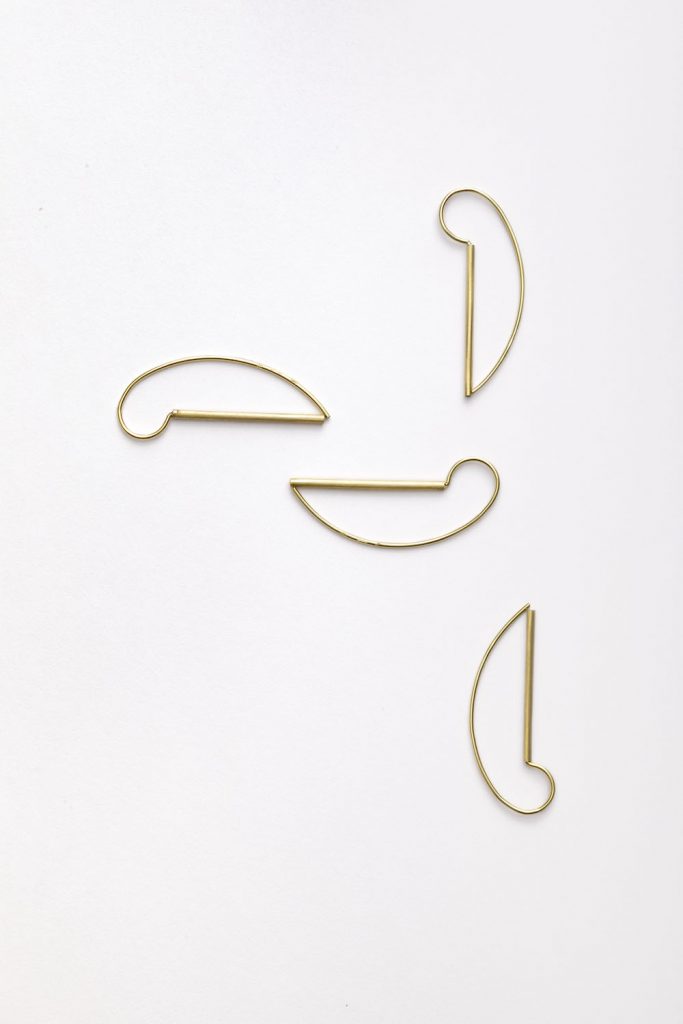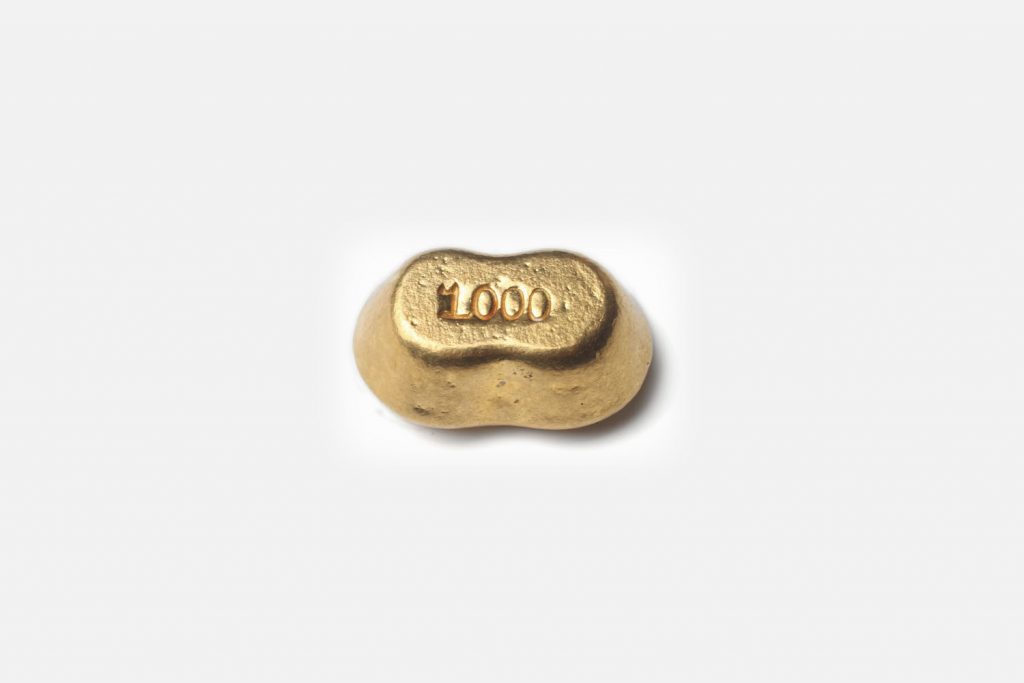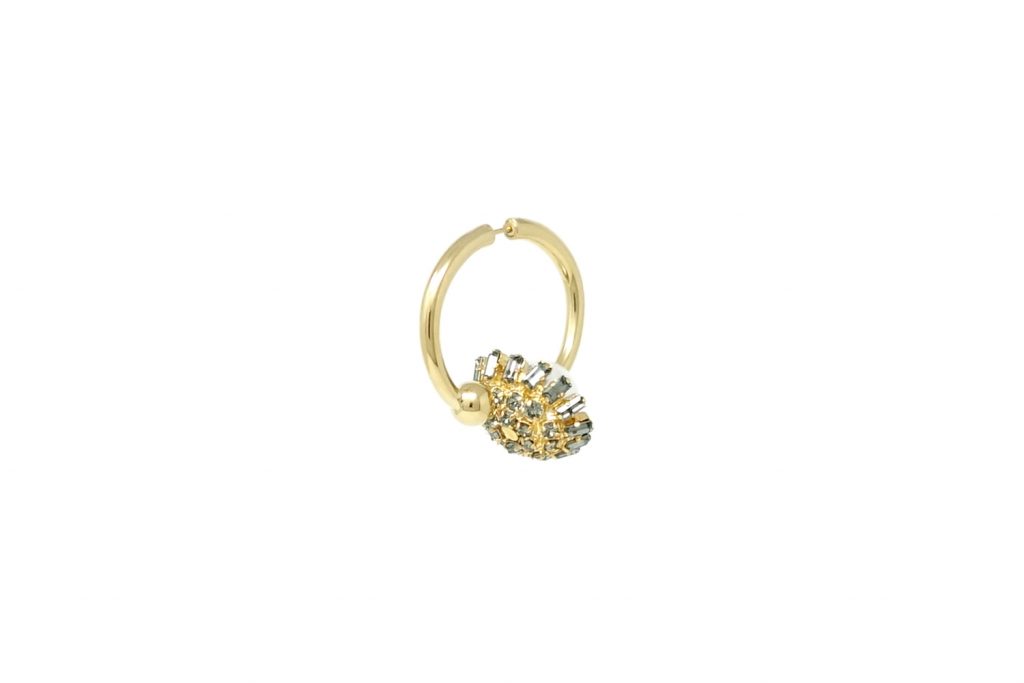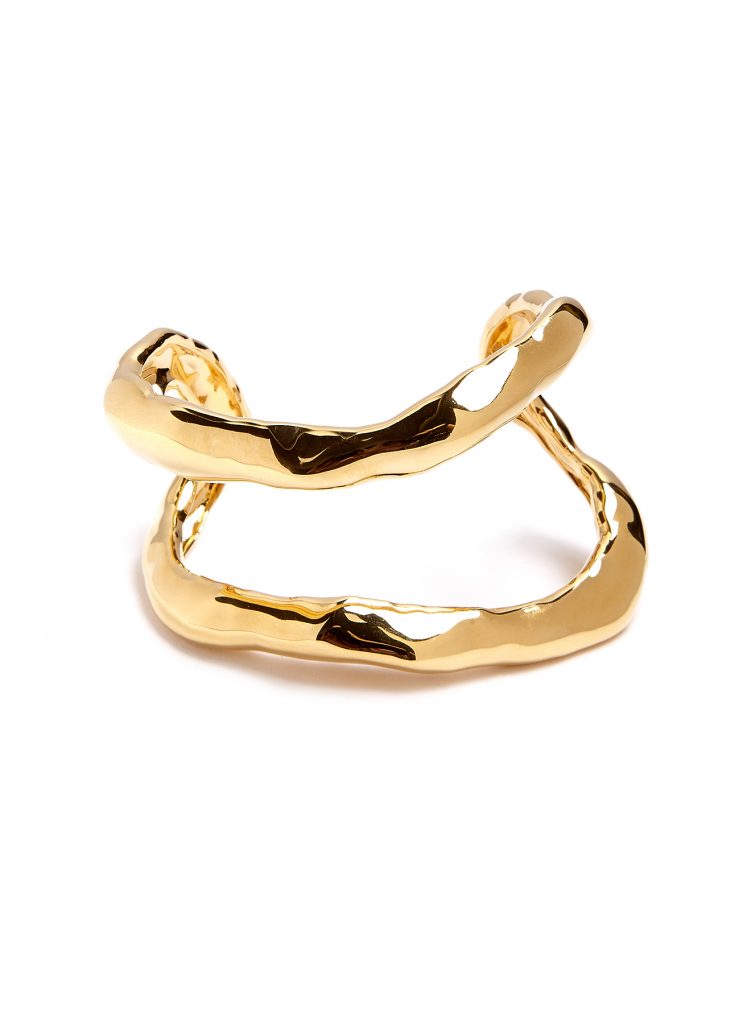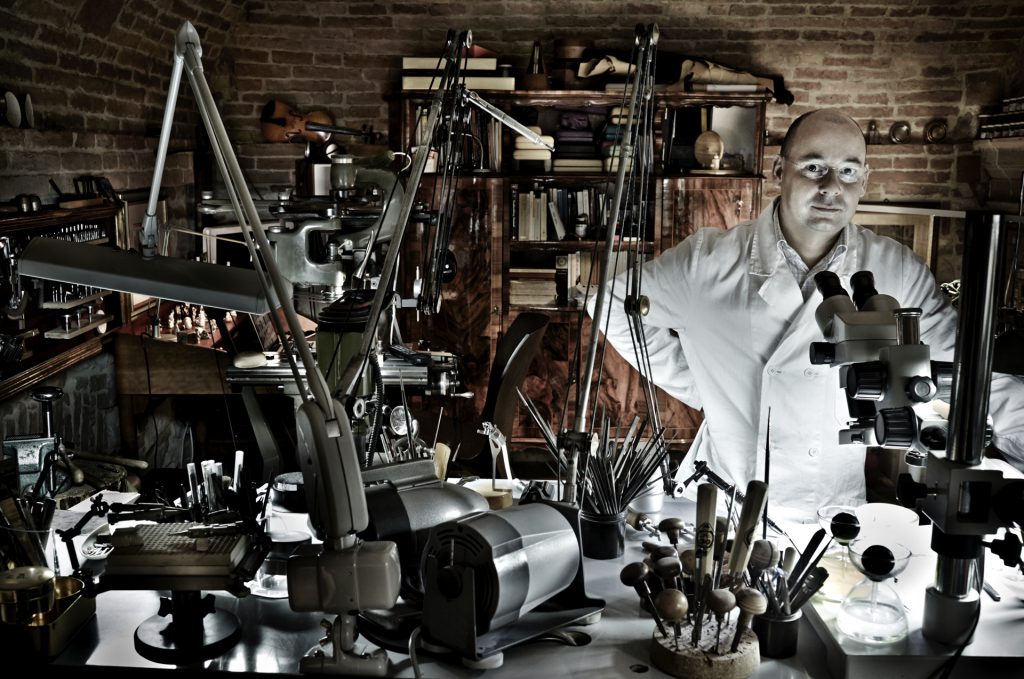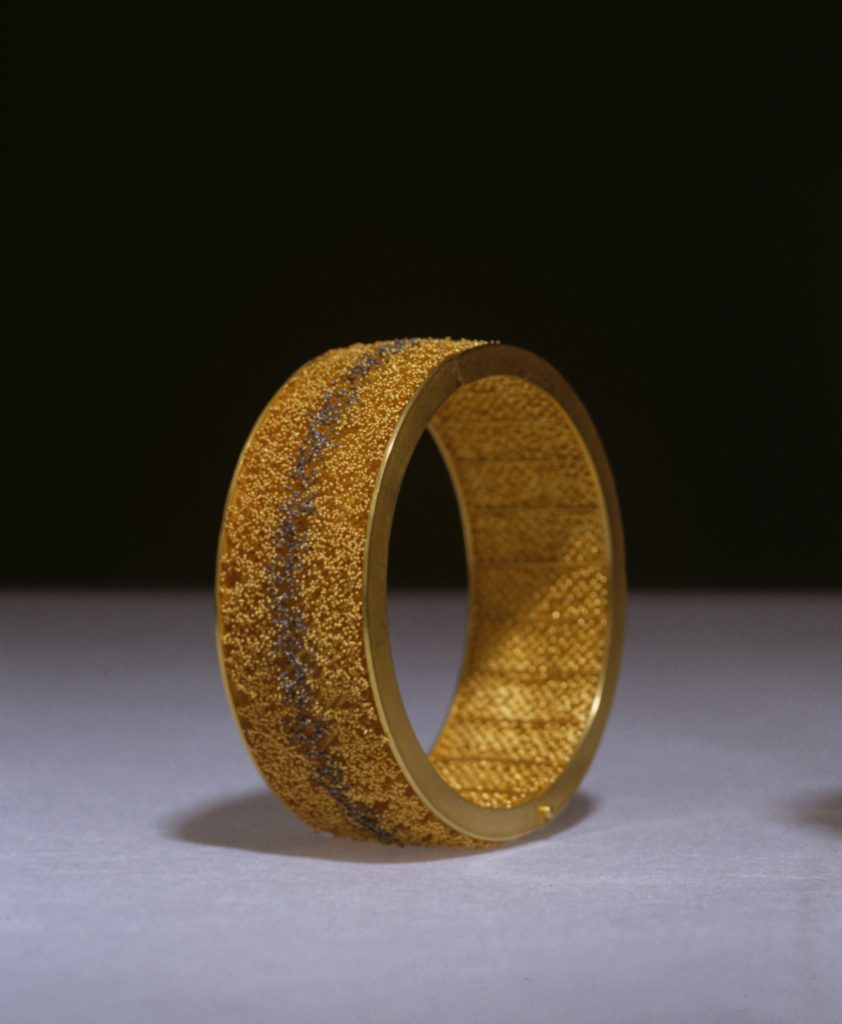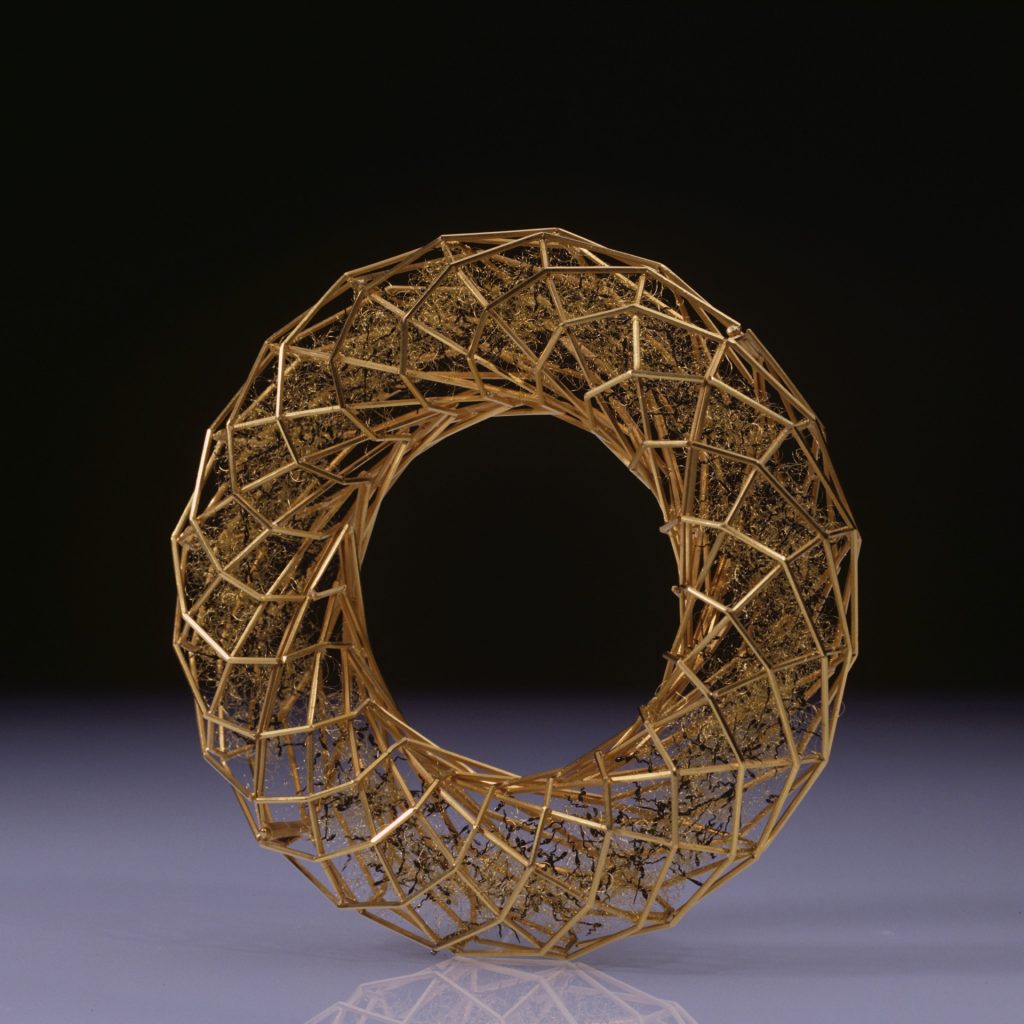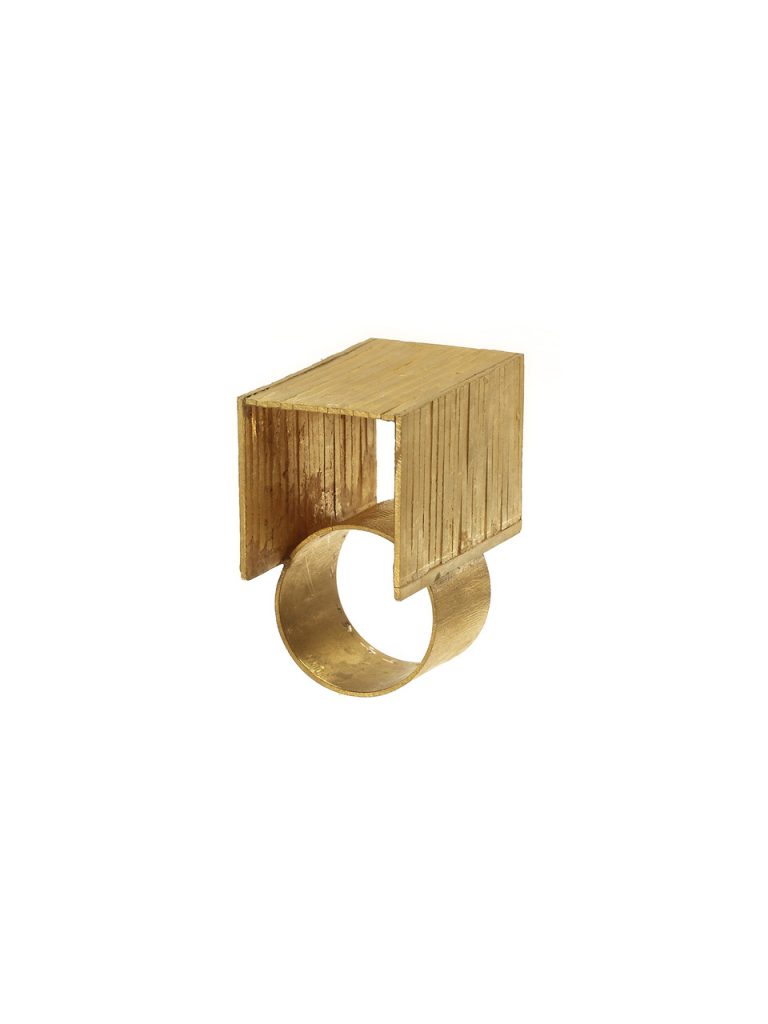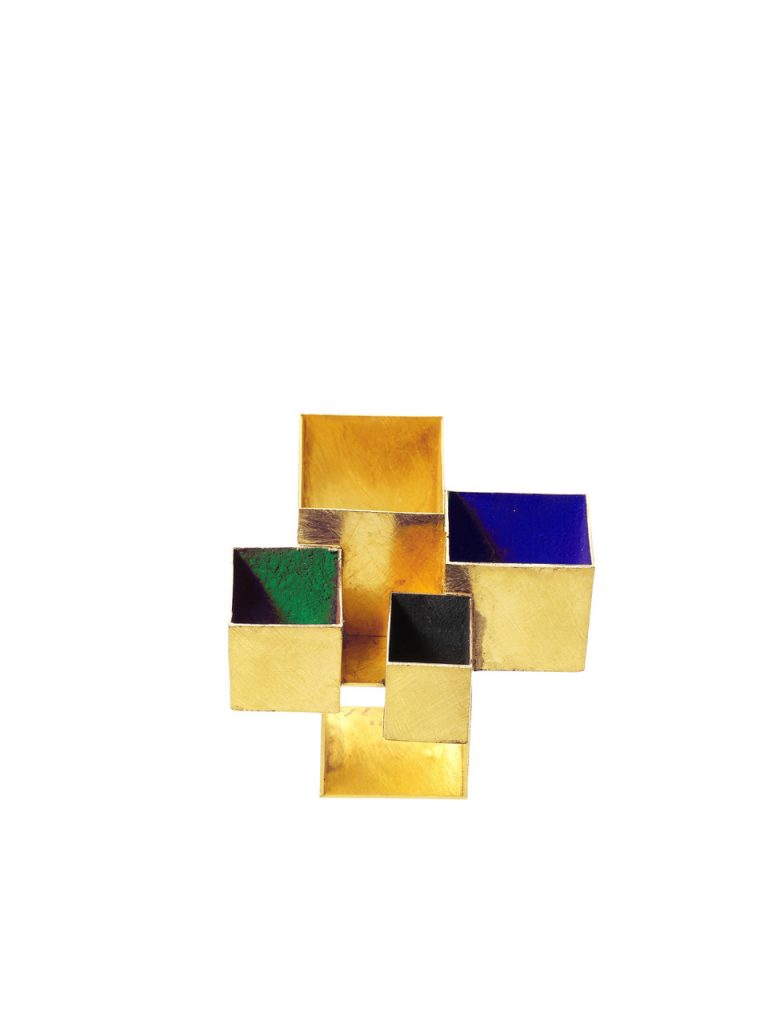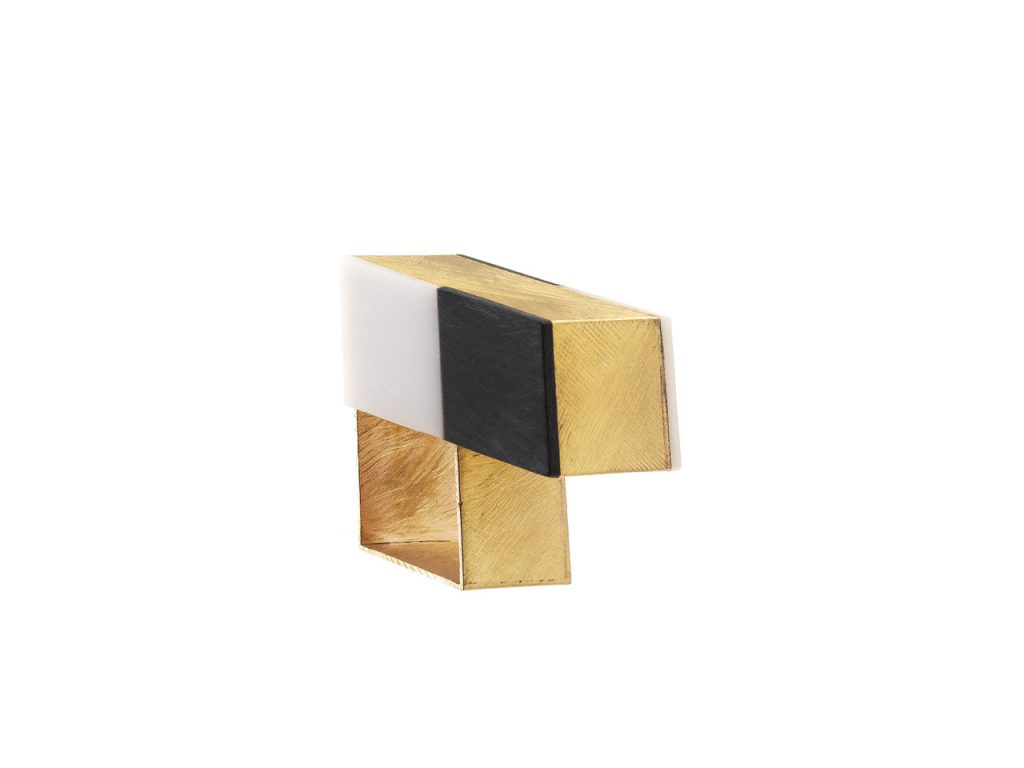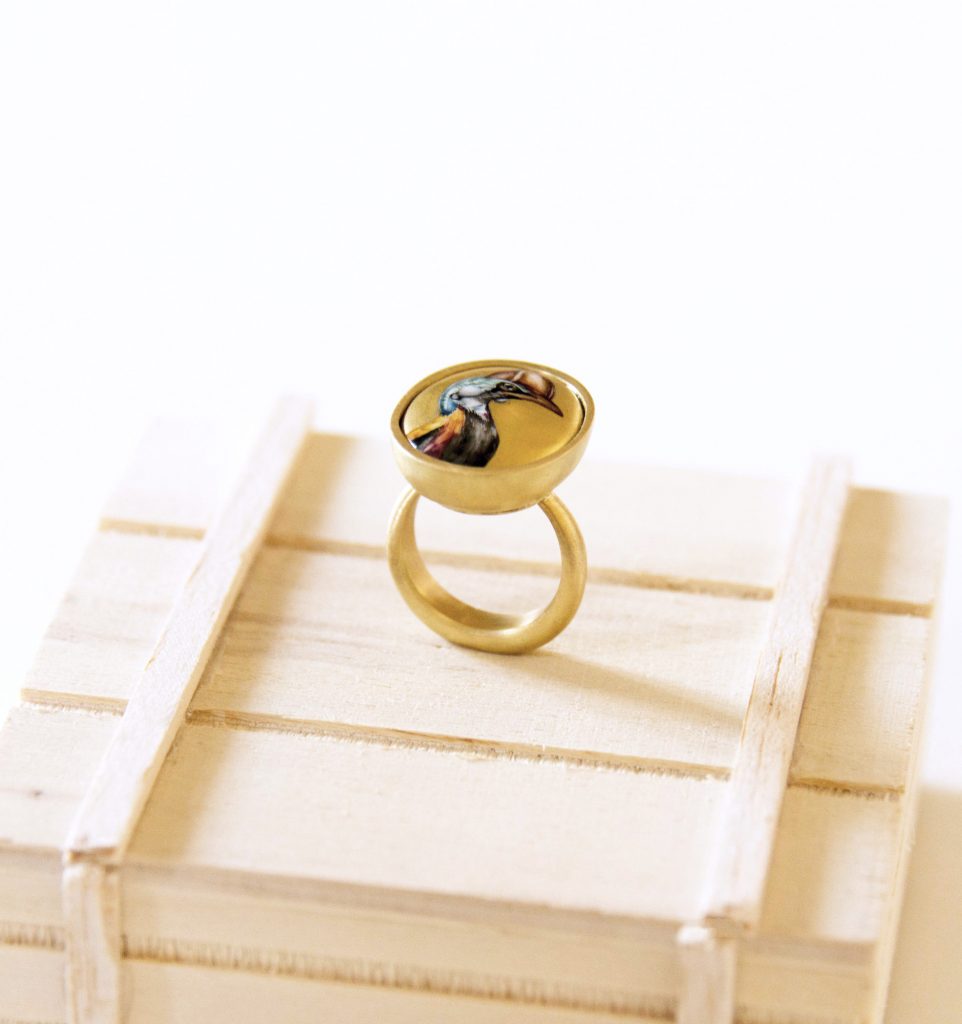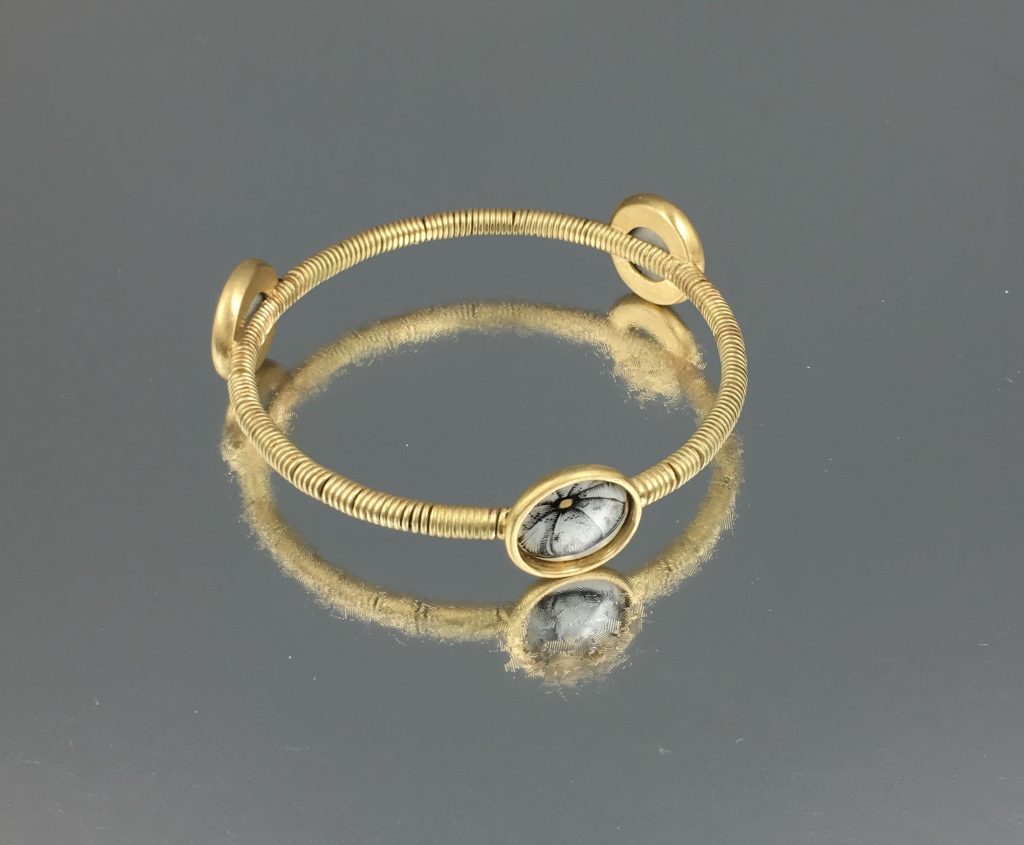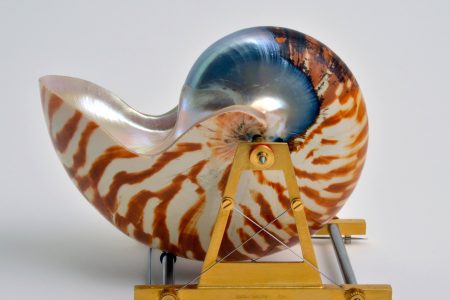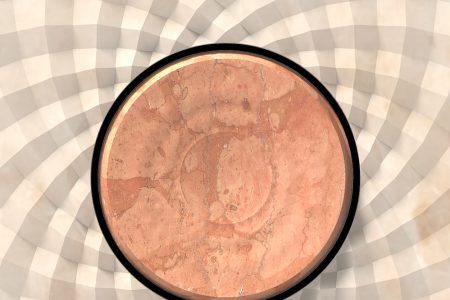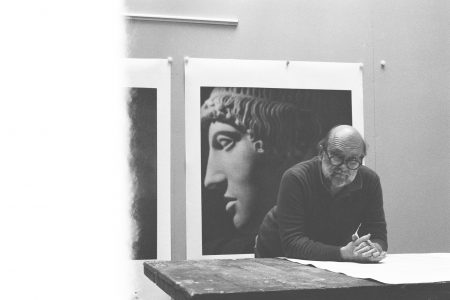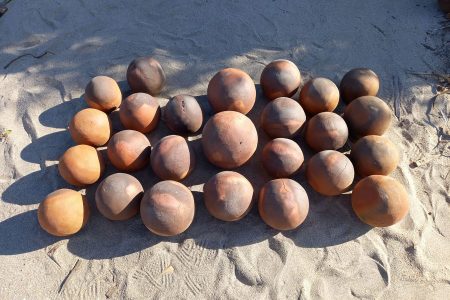Gold Fever
Independent jewellers Keiko Yakushi, Giovanni Corvaja, Giampaolo Babetto, Veronica Lenza and Valeria Bersanetti unleash the evocative power of gold that is still as popular as ever today.
Currently trading at the highest levels seen in months, gold has always been the go-to investment we’ll always fall back on, holding its value in both good and bad times, whether in periods of crisis, war or economic recession. Since ancient civilisation, the precious metal has held incredible symbolic value for humanity. It is shiny, relatively scarce, non-corrosive, supple and easily melted into bars, coins, or jewellery. We take a look at five Italy-based jewellery artists who innovatively use an abundance of gold in their creations, in love with its lustrous, transformable and mysterious qualities.
KEIKO YAKUSHI
Proposing minimalist, ethereal and discreet pieces for daily wear, Keiko Yakushi stretches gold into thin rods, allowing the metal to express itself as harmoniously and simply as possible. “In my approach to jewellery, I always tend to subtract elements, simplifying form and use,” she says. Making her own gold alloy, everything starts on the bench: she never draws or uses lost-wax casting, but melts the gold herself in her atelier, laminates it and solders it, before calling on the savoir-faire of Milan-based engravers, embossers and stone-setters boasting more than 30 years of experience. Her jewels don’t stem from a precise design, but from continuous experimentation and extensive knowledge of the material.
Born in Itami, Japan, in 1982, Yakushi began by making small pieces of jewellery out of non-precious materials for her friends, then enrolled in a goldsmithing course in 2004 and won the Kobe Fashion Contest in the jewellery category a year later. The prize was a scholarship to attend Valenza Po goldsmith school in Piedmont. Initially meant to stay a year, she never left. In 2008, she moved to Milan and was hired by boutique jewellery brand, Atelier VM, before establishing her eponymous label in 2019. Today working out of her Milanese atelier to produce approximately 100 pieces annually, her jewels are exclusively made from 18-carat yellow gold. “Beyond its precious light, gold is flexible, ductile and the most malleable of all metals,” she dis- closes. “I am not interested in making high-impact jewellery; I try to create jewellery from scratch that lives on in people’s everyday lives.” Yakushi observed that in Italy, families used to pass down necklaces and rings to their children during rites of passage, and today they bring in gold jewellery to be melted down to make new creations. In the same way, her first collection originated from a gold bar that her grandmother offered her before she left Japan. “Meeting Italians and Italy made me love gold,” she explains. “The great Italian tradition of goldsmithing and the way Italians wear gold jewellery in their everyday lives inspired me and made me realise that I wanted to create with this material. I understood that I wanted to stay in Italy and be part of their tradition, learn from them and look for my own way of making jewellery.”
GIOVANNI CORVAJA
Considered one of the most technically innovative jewellers of his generation who has propelled the traditional craft of goldsmithing into the 21st century, Todi-based Italian goldsmith Giovanni Corvaja, whose pieces have been acquired by prestigious museums and collectors in Europe, America and Australia, has succeeded in turning gold into thread, thereby taking the metal to new heights. The son of two professors of physical chemistry at the University of Padua, his studio is part traditional goldsmith’s workshop and part science lab, where he created his Golden Fleece collection. In Greek mythology, the Golden Fleece is the fleece of the golden-woolled, winged ram from the story of Jason and the Argonauts, which Corvaja translated into furry pieces of jewellery: pendant, brooch, ring, bracelet and headpiece.
It all started in the early 1990s when he invented a process that allowed him to scale down gold and platinum to one-fifth the thickness of a human hair, thereby opening new horizons for him. In his hands, precious metals were converted into long, fine and soft fibres that gave the impression of touching fur. Although the work was highly demanding and required a decade of research, for Corvaja, fascinated by the process of making, it’s the journey that counts, seeing importance in every stage, while simultaneously transformed by the craft itself.
Take for example the bracelet he produced composed of 1,241,856 ultra-thin gold wires and 4,000 platinum granules. Weighing 324 g, it required 1,300 work hours and 28 km of virtually invisible, self-made gold thread. “Gold is my obsession,” he notes. “It is a symbol of evolution and perfection, it expresses the best virtue of nature and creation. It is therefore a necessity for me to work with it, to acquire the maximum possible knowledge of it.” More recently, his Mandala bowl, a finalist in the Loewe Foundation Craft Prize 2019, was spun from 4 km of gold wire weighing just 82 g, as two-thirds of its volume was thin air.
GIAMPOLO BAMBETTO
A major influence on the avant-garde goldsmiths scene since the late 1960s, Giampaolo Babetto is one of the protagonists of the Padua School and has extensively shaped the image of art jewellery in Italy and worldwide. Echoing modern art movements such as concrete art, minimal art, kinetic art or op art, the artist’s geometric, tectonic jewels resemble mini architectural pieces or mini sculptures. Inspired by plants, architecture and ancient art, his works are conceptually innovative and the techniques he uses are a means of communicating his thinking to the fullest, so the greater his technical knowledge, the deeper he can ex- press himself.
At Pietro Selvatico Art Institute in Padua, Babetto studied architecture, then enrolled in the metal art department, learning embossing, chiselling and enamelling. At the end of the course in 1966, he attempted to make a gold brooch and, from there, his passion for contemporary goldsmithing was born. Gold is his metal of choice due to its malleability and warm sheen, which he mixes with unconventional materials such as plastic or glass, covering the surface with a velvet-like pigment in bright shades or using enamel and age-old niello-based techniques. “Gold is my favourite material because it is very responsive to work with,” he says. “It plays a very important role in the creation of my jewellery because it retains every trace of manual intervention. It is very inspiring in the manual process.” Starting with pure ethical gold, Babetto then concocts his own 18-carat gold alloy in his workshop, which is necessary to obtain the exact colour and technical characteristics desired. Not limited by process or material, he crosses disciplines, creating not only jewellery but also objects, furniture and interiors. His works today are in the collections of the Victoria and Albert Museum in London, the Museum of Decorative Arts in Paris, Museo degli Argenti in Florence, Maxxi Museum in Rome, the Metropolitan Museum of Art in New York and the Museum of Fine Arts in Houston.
VERONICA LENZA
Named after Swedish botanist and zoologist, Carl Linnaeus, Veronica Lenza’s Milan-based Linneo brand combines gold and porcelain onto which she has hand-painted miniature drawings of plants and animals. Starting from nature, an inexhaustible source of surprise and emotions, the Brescia-born designer also draws inspiration from artefacts made by prehistoric humans, as well as objects and personal ornaments representing the habits, discoveries and first forms of spirituality. Her aesthetic is a play of contrasts between the opacity of matt-finished gold and the iridescent sheen of glazed ceramic. Having studied fine art and art history at Brera Academy in Milan and art, film and photography at London’s Kingston University, the self-trained jeweller collaborates with Milanese craftsmen to manufacture her one-of-a-kind handmade pieces.
“Gold was often used to fill in backgrounds in paintings,” Lenza says. “As unearthly light, gold leaf was associated with the sun and at the same time a symbol of purity and immutability, of everything sacred and eternal. These qualities are tangible when you start working with it and learn its physical properties. I like gold’s presence: in a world where lightness is a marketing keyword, it resists and has an ancestral power simply by its weight.” Recognising that resources are finite, she often repurposes old jewels that clients bring to her, melting down the gold and framing new stories around them. “I think a circular economy is a responsibility for everybody who produces clothes, goods or jewels,” she states. “We have to reduce consumption, be imaginative about how to transform what we don’t use anymore and value the history of objects and materials.” Combining new and used gold in her jewels, she believes that the value of the metal lies in its intrinsic capacity to be recast and remoulded in an endless cycle.
VALERIA BERSANETTI
Drawing from the worlds of art and folklore, Valeria Bersanetti’s creative approach stems from in-depth research on tribal cultures and the styles of various ethnic groups, from South America, the Far North and Mexican Modernism to German Brutalism, Minimalism, Bauhaus and the feminine aesthetic of the early 20th century. At the same time, artists like Louise Bourgeois, Joana Vasconcelos and Richard Serra or designers like Eileen Gray and Ettore Sottsass are points of reference for the Milan- and Rimini-based designer, who works with artisans in Arezzo in Tuscany to craft jewels characterised by a contrast of textures, shapes and materials. She says, “The collections that I create do not seek the consent of fashionable trends, but are the result of an expressive need to describe through my eyes my aesthetic vision of beauty. Therefore, sometimes they are very different from each other and often also require the use of other materials.”
Born in Padua in 1980, Bersanetti graduated with a degree in the conservation of cultural heritage from Ca’ Foscari University of Venice, then studied fashion design at CFP Milan where she discovered a love for fine and fashion jewellery. She began her career designing jewellery and leather goods for Marni in Milan from 2005 to 2017, before launching her own brand Adais in 2018, which expresses her passion for fashion and art. In her repertoire of gilded jewels, we find the simple, hand-moulded Leaf pendant for Adais, as well as ultra-chic, sculptural half moon-shaped Hieroglyphic earrings and mini boulder Flintstones earrings representing the debut of her highly creative work for Colville with whom she collaborates. She states, “I love gold in all its shades.” Although her creations may currently be made of brass coated with 50 microns of gold, she hopes in future to make “jewels in gold to give completeness to the aesthetic path undertaken over the past few years already”.
This article originally appeared in our S/S 2022 issue: TLmag37: State of Gold
@adaismilano_
@giovannicorvaja
www.caterinatognon.com
www.antonellavillanova.it
@keiko_ yakushi
veronicalenza.com
@veronica_lenza_linneo

